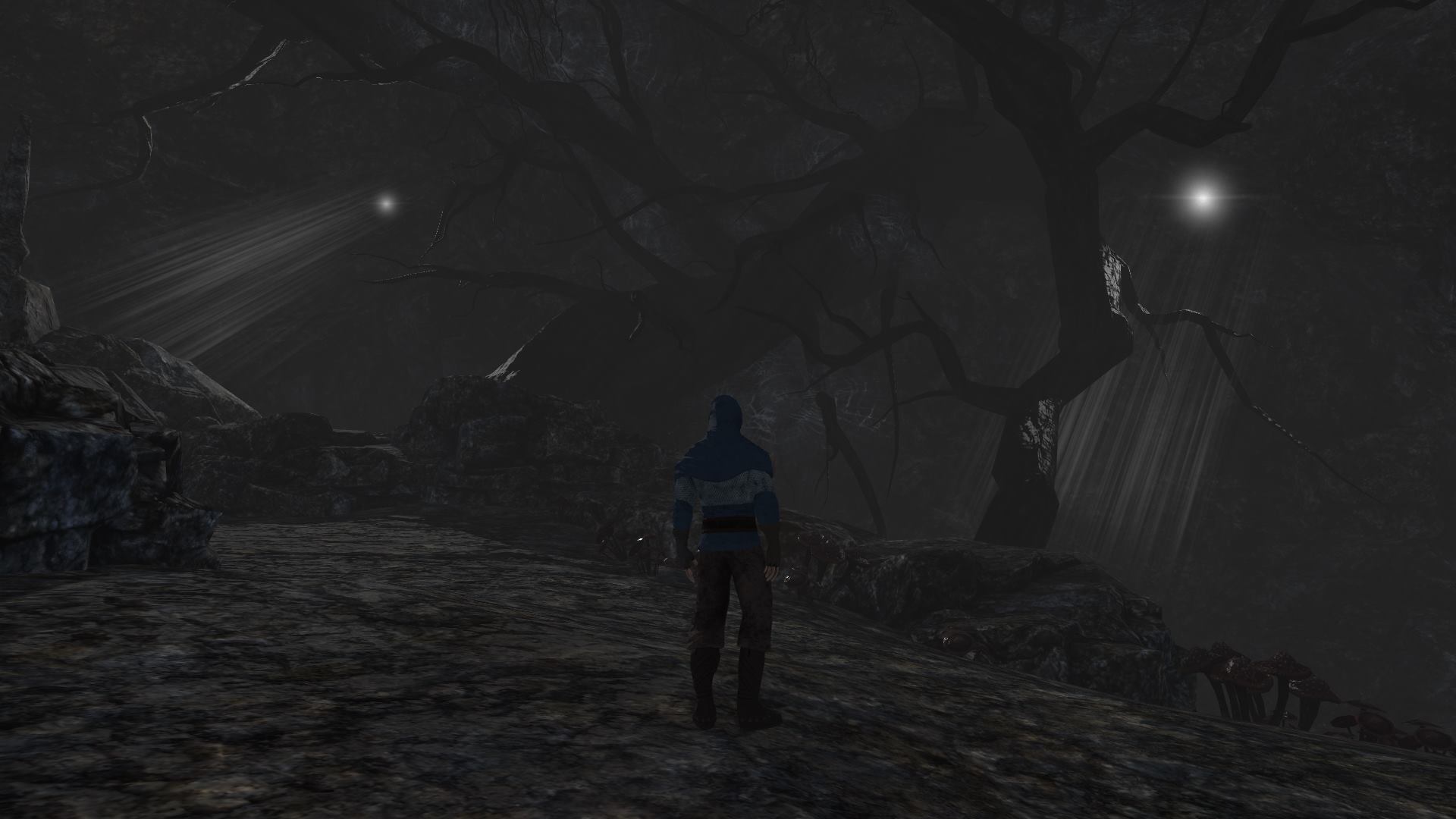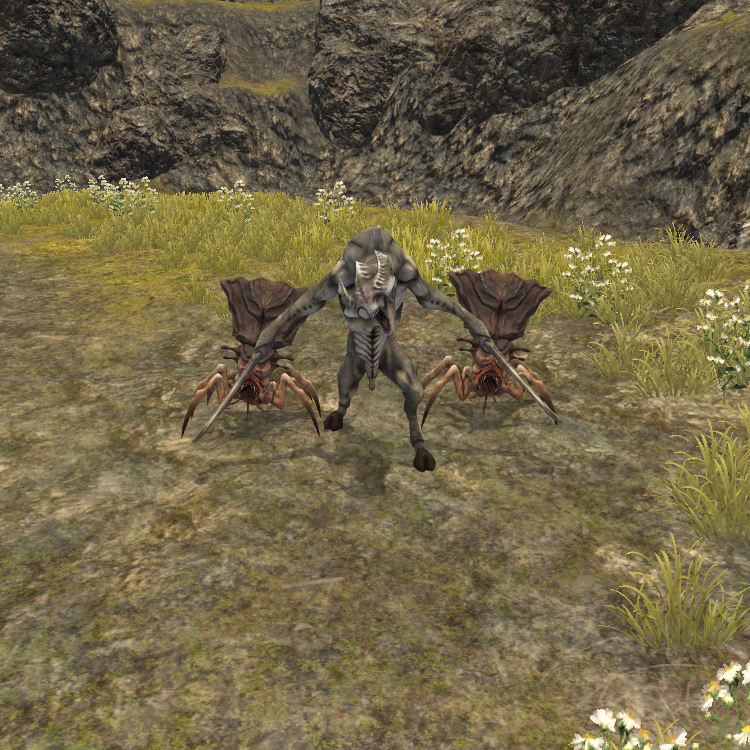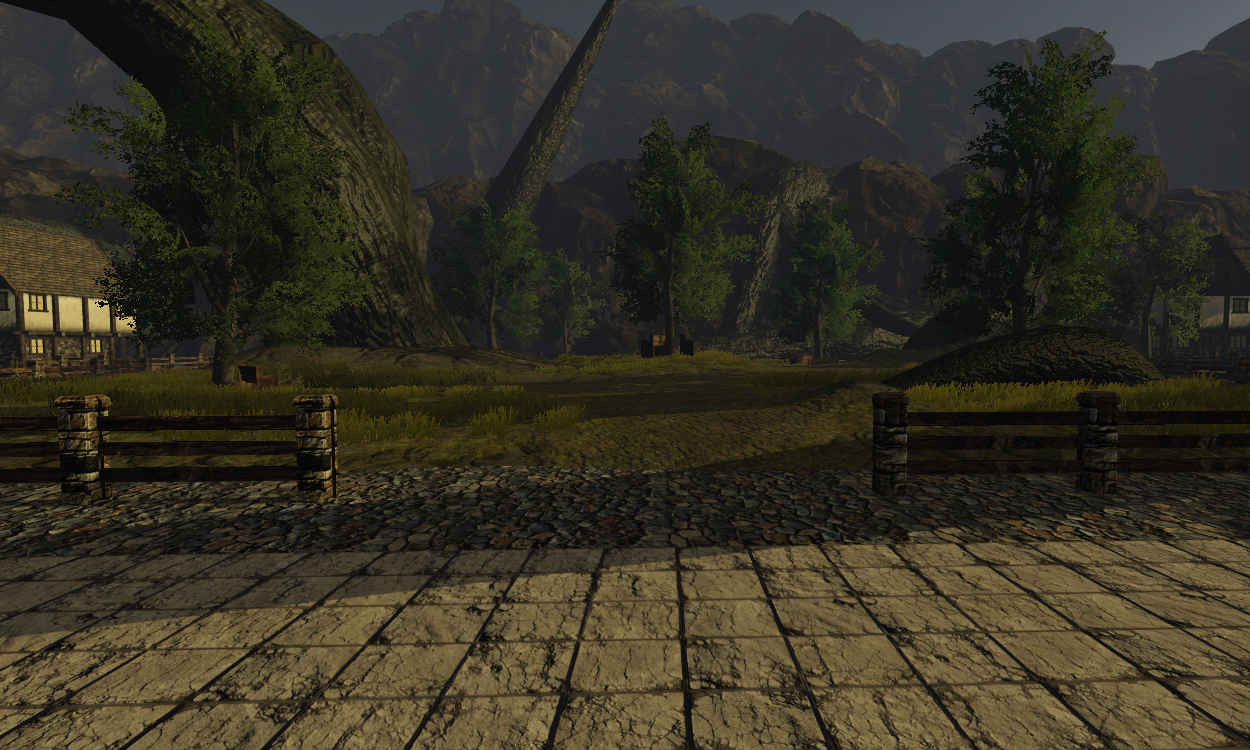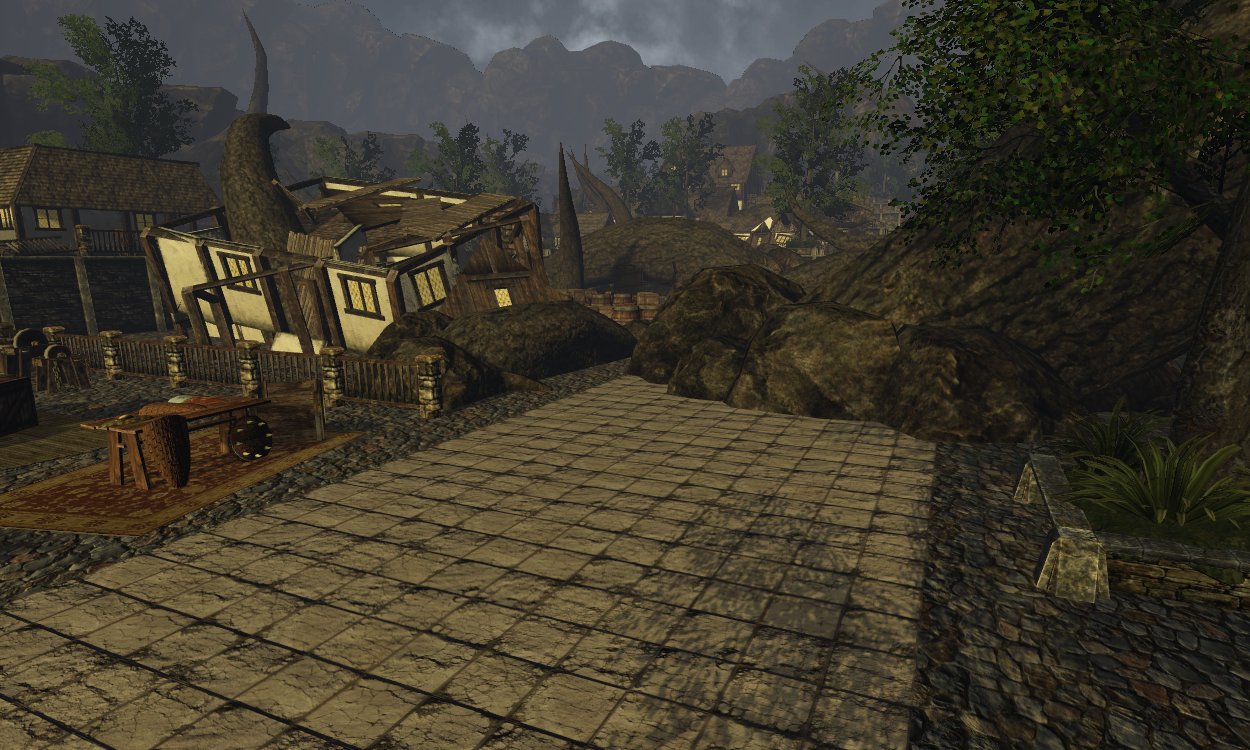source: Bevontule Wiki
Origins
It is not known exactly when Roots initially appeared upon Onich, but the first recorded instances appeared nearly a century after the fall of the Sallasat civilization and nearly two centuries after the race of Humanoids known as Onichians all but disappeared from the continent. More specifically, Roots were discovered around the year 950.
While coincidental, this particular timing was seen initially as significant. Humans were content to blame the Roots on the Onichians, imagining it as some kind of posthumous curse, a sort of last word, as it were, albeit one that needed to fester for a hundred years or so. For the bloodthirsty and newly war-hardened Humans, the Sallasatians became the natural target, a race of actual Humans with which they had, for so long, feigned solidarity.
Once the Sallasatians had gone the way of the Onichian race, Humans were finally able to breathe a sigh of relief, unified, and finally capable of taming the vast continent of Onich. They had witnessed firsthand the devastating effects of Onich's innate and mysterious energy, vowing never again to become involved with it, treading lightly when and where they explored and inhabited.
There were two major outbreaks of Roots, encountered nearly simultaneously. The first was discovered in the far north of Onich, near the arboreal region known as The Expanse. This region was sparsely populated, so it was no wonder that they were not documented until they had claimed a significant tract of land. For this reason, it was impossible to determine their direct origin.
The second outbreak was encountered by a small Human team that had been sent to survey the remnants of the Sallasatian kingdom. Creatures similar to the ones they had encountered during their own campaign against the Onichians were present as well, but they were not able to conclusively state what it was that produced them. Naturally, they fled upon the first sight of these entities, retreating through the mountains.
Their findings eventually reached the Anondendian Kingdom, perplexing the elite. Was it not after all, the Onichians themselves that had conjured those creatures and not the Sallasatians? They were both Humans after all, and even though the Sallasatians were known to dabble with the forbidden energy known as Ont, there was no evidence that they had dabbled as deeply as the Onichians—until now.
Regardless, the Anondendian elite moved to ignore the findings, insisting that the blame be kept solely on the Onichians, maintaining that whatever it was that was encountered in the Sallasat ruins was somehow, something of their conjuration. Somewhere around this same time, the Northern root fields were observed to have produced creatures similar in origin to the ones found in Sallasat, a finding that deeply shocked Humans, eventually opting to refer to these new scourges as Roots and Rootsouls, respectively.
Observations
It was around this time that the Valequinina government emerged, largely as a result of two catalysts: firstly, the Humans that settled Valequine thought of the southern lands as desecrated and impure and thus moved north, wanting to get as far away from the ancient Onichian homeland as possible. Secondly, the Valequinians embarked on a large scale campaign to eradicate any mention of either Onichians or Sallasat, a period of time later referred to as the Revisionist Era.
While some Humans sought to understand the Roots, Valequinians held the belief that anyone who delved too deeply would inevitably become corrupted, just as the races before them, positing that there was some deep connection between Ont and the Roots, stopping just short of attempting to quantify it. Many Humans were content to join Valequine, wanting to leave that dark era behind, thinking that the Roots were simply a curious byproduct, but moved too slowly (or as some believed, not at all) to be a threat.
The turn of the millennium changed that, and the northern group of Roots, which had lain mostly dormant since their inception, suddenly burst forth in a period of rapid expansion that lasted nearly a week. This event was later referred to as a 'saccade', and many more saccades followed, each of them named so for the year in which they occurred or the territory they enveloped.
The first of these events, known as the Saccade of 1008, saw the northern Roots balloon from a nearly five-mile radius to a staggering fifty-mile radius, enveloping many settlements, and killing an estimated four-hundred people. It was during this time that the process for creating Rootsouls was first observed and this information spread rapidly in the southern kingdoms.
It was quickly realized that the Roots were something to be taken seriously and that the first line of defense involved switching from burials to cremation, since it was directly observed that Roots generated Rootsouls, in part, from corpses. However, this method only worked for Humans, and, for obvious reasons, they were unable to prevent Roots from generating new Rootsouls from non-Human remains.
The southern nations began to expand their military capabilities and soldiers began to filter into the Northern regions of Onich, which were seen by many, to be a lawless region, barely worth fighting for, inasmuch as the southern nations were able to learn more about the Rootsouls and their capabilities. To be fair, however, they had fought Rootsouls before; rather, they had slowly and begrudgingly realized that these creatures originating from the north were the exact same creatures that the Onichians had used against them some centuries earlier.
What was not known then, however, is that the Rootsouls previously encountered were not merely conjurations; rather, these were not creatures that were controlled or created by Onichians, but were, in fact, deceased Onichians themselves that had presumably been created in a similar process to the one they observed, although they were unsure as to how they accomplished this, since Roots did not exist back then.
The key difference, notably, is that earlier Rootsouls had been weaker than their contemporaries, evidenced most prominently by the size disparities observed in the newer, more 'modern' Rootsouls. The ancient Onichian Rootsouls could be destroyed by the coordinated efforts of well-trained soldiers. These newer Rootsouls, however, were far larger and far more dangerous and they could barely whip together a force to meet the Rootsouls, let alone fight them.
Meanwhile, Anondend, working in conjunction with the Western kingdoms, sent a larger scouting force to observe the Root fields that existed in Sallasat. From the combined observations from both the northern and Sallasatian root fields, they were able to eventually ascertain key differences in the two fields, learning ultimately that they were very, very different.
After further scrutiny, they learned that the Northern Rootfields, aside from the threat of random saccades, moved at a slow, but constant rate, but only at night. This led many to speculate that Roots were rendered immobile by the Sun, and by extension, light itself. To test this theory, a large border of torches was erected to surround an area of the Northern Roots.
Ultimately, this did nothing to halt their progression, and it was further learned that the Roots did not even burn as they claimed the torches themselves, incorporating them into the tangled mass. It was further learned that the Roots could not even be cut or damaged in any way, but the Rootsouls were postulated to be different, although no one had yet felled one.
A distinction emerged between Rootsouls and 'True Rootsouls', the former being comprised of a single corpse (like the Onichian Rootsouls encountered before) and the latter being comprised of any number of corpses and other organic material. True Rootsouls were thought to be unkillable, but this theory had not yet been put to the test.
In contrast, the Sallastian Roots seemed to behave quite differently from their northern counterparts. They were observed to move at a constant, but extremely sluggish rate and were not hindered in any way by whether it was day or night. Of the many bursts (or saccades) witnessed by the Northern Rootfields, none were ever witnessed by the Sallasatian Rootfields. For this reason, the Sallasatian Rootfields were thought to be significantly less threatening.
Similarly, however, both Root fields produced Rootsouls in the same manner, and both were observed to be hindered by certain types of geography, notably mountains and rivers. This further led credence to the theory that the Northern Rootfields were vastly more dangerous as there were no natural borders to contain them. The Sallasatian Rootfields, and the former kingdom itself, however, was mostly surrounded by mountains.
It was initially thought that Rootsouls were 'bound' specifically to areas in which Roots existed, but this was later contradicted, first in Sallasat, and later in the north, as Rootsouls began to appear without Roots, sometimes finding passage through the mountains and slaughtering those dwelling along the border villages.
It was further postulated that these 'renegade' Rootsouls were weaker than their Root-dwelling brethren, leading many to speculate that the relationship between Roots and Rootsouls was far more symbiotic than first appeared. This theory was proven correct as the border villages began to fight back against the Rootsouls that occasionally stumbled out of Sallasat, finding them to be far less terrorizing than the others.
The Losing Battle
Both Valequine and Anondend contributed nearly five-hundred soldiers to the northernmost regions of Onich in an effort to stop the spread of the Roots there. In the year 1101, the northern Roots expanded rapidly again in an event known as The Second Saccade. As expected, the Sallasatian Rootfield continued to expand at its normal rate and was not affected at all by this event.
The subsequent expansion proved disastrous for the soldiers stationed in the port town of Phlogisant, one of the larger towns in that region of the world. Not only was the entire town, and most of its citizens and soldiers destroyed, but they also fueled the growth of additional Rootsouls, which had become increasingly brazen.
At the same time, the northern Root field had moved westward as well, eventually driving out the Humans living on the western side of The Expanse. The largest Human city in the north, known as Nethel, was increasingly under threat and the Humans there began to prepare for what seemed inevitable as the Roots pushed ever onward.
Throughout the fighting in Phlogisant, however, the Humans did receive a small bit of good news, finding that some of the Rootsouls, but not all, were highly susceptible to fire, and several new contingents of archers were sent northward. Nethel, however, was on its own, as the Roots had blocked all mainland access through the northern areas of Onich.
Since the previous two saccades had occurred nearly a hundred years apart, the Humans assumed that they would be safe for the next century, a belief that was proven wrong, when the third saccade occurred in the year 1124, which was also known as the Nethelian Saccade. As expected, the Roots overran and devastated the city, striking a major blow to the morale of Humans continent-wide.
The Nethellian Saccade was primarily an expansion westward, and the Humans learned, from this, that the expansions could be asymmetric as well. Moreover, the Roots were seen as utterly unpredictable and indestructible and many Humans began questioning whether or not they should attempt to leave the continent of Onich altogether.
A calmer period persisted for the next two hundred years, as no saccades were observed and the Root menace was far more passive. Regardless of this, The Roots had spread as far eastward as the Merovian River and as far westward as the Brevalian Desert, which ultimately served to delay their spread Southward during this time, in the absence of saccades.
The year 1340 saw a fourth saccade, which helped to push the Roots ever further southward. On the western front, the Roots had emerged from the Brevalian Desert, and on the Eastern front, the Roots were able to surge past the swift current of the Merovian River. This saccade was unique, however, in that no substantial losses of Human life were reported.
Additionally, the Roots began to take wildly different and inexplicable paths, compared to their previous expansions. The western Roots began to curve around the vast western mountain range that extended nearly three-hundred miles from north to south, their progress through the mountains seemingly halted.
The eastern Roots, meanwhile, began to follow the coastline of the Inner Sea, rapidly moving towards the Southern kingdoms. Without warning, the Roots began to spread across the Gavant Plateau, effectively cutting off the southern kingdoms from the northern reaches. The region known as the Bight of Illuvia saw a rapid increase in usage as it remained the only known path bridging the two regions of Onich.
Despite this, Valequine seemed focused on domestic and non-Root affairs, behavior that was seen as deeply puzzling and defeatist by nearly every other Human kingdom on Onich. They expanded their military operations and created the covert organization known as The Invaldest, seemingly taking advantage of the Onichian chaos to further cement their stranglehold on the continent—despite being directly in the line of fire.
For the next several hundred years, the Eastern Rootfield began to wrap back on itself, almost possessing a strange and calculated intelligence of its own. There were still many areas to the north that were Root-free, which looked to change within the immediate future. Meanwhile, the Sallasatian Rootfield had met the northern rootfield along the Western coast of Onich, and with enough time, Humans living in that region expected that they would bore through the mountains, possibly striking a town such as Molsha or even Auvane, given a sufficiently strong saccade.
The last recorded saccade occurred in the year 1473, and further extended the reach of the Roots along the Eastern kingdoms, eventually threatening remote locations such as Magisvane, Palignon, and even the island nation of Blosk. This saccade, despite lasting for many weeks, seemed to have no effect in the west, and moreover, produced a relatively low mortality rate, owing to the remoteness of the regions that were claimed.







